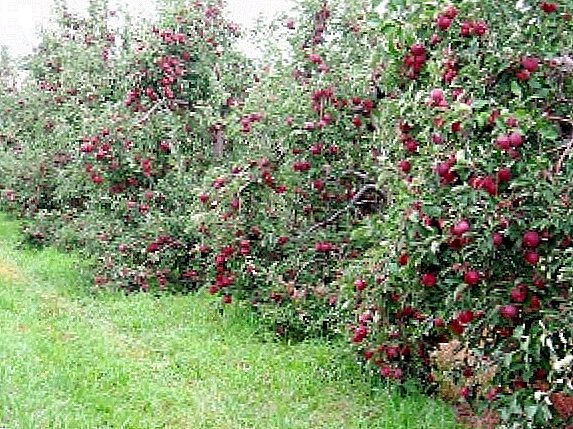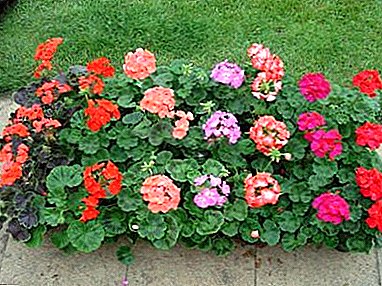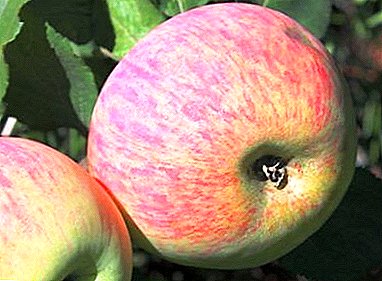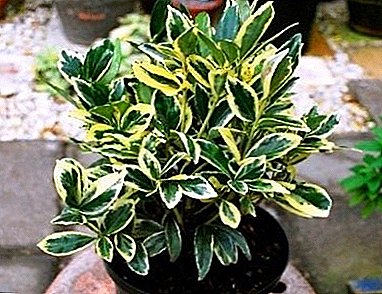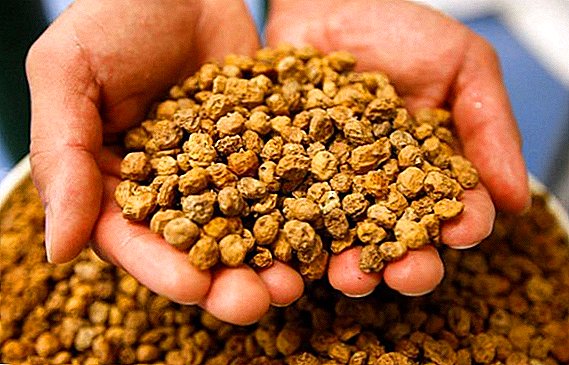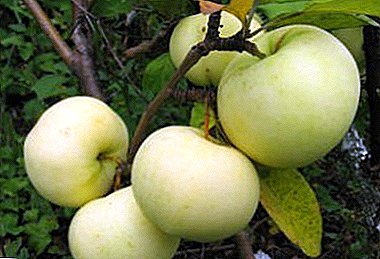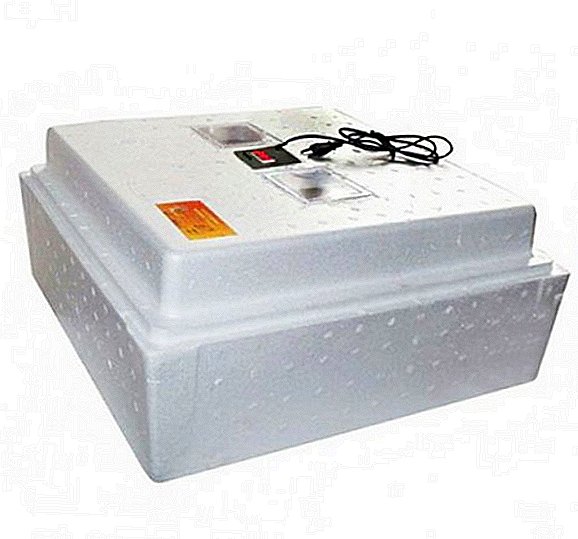 Whether egg incubation at home will be successful depends largely on the technical configuration. For this you need to have good equipment. Incubator "Neptune" has established itself as a reliable device for breeding domestic and even wild birds. Positive customer reviews have provided him a good reputation. Consider the characteristics of this device and instructions for its operation.
Whether egg incubation at home will be successful depends largely on the technical configuration. For this you need to have good equipment. Incubator "Neptune" has established itself as a reliable device for breeding domestic and even wild birds. Positive customer reviews have provided him a good reputation. Consider the characteristics of this device and instructions for its operation.
Description
Neptune is a household appliance designed to incubate poultry eggs: chickens, ducks, turkeys, geese, guinea fowls, quails, and even small ostriches. The incubator is a container of polystyrene foam - a light and durable material, thanks to which energy is saved and the required temperature is maintained even in the off state.
The swivel mechanism can be automatic or mechanical. The principle of the mechanism - a framework. The frame is a special mesh, in the cells of which are laid eggs.
The automatic mechanism performs 3.5 or 7 turns per day. The device is powered from the network. Some models are equipped with a battery that allows them to work smoothly when the electricity is turned off. 
Features of operation:
- the temperature in the room where the device stands should be not less than 15 ° С and not more than 30 ° С;
- the room must be well ventilated;
- the device must be installed on a table or stand, the height of which is not lower than 50 cm;
- the surface should be smooth, without distortions.
The manufacturer of the incubator is PJSC "Neptune", Stavropol, Russia. The area of heat radiation from heaters is quite large, so the inner surface of the incubator heats up well.
Check out the technical specifications of household incubators such as Ryabushka 70, TGB 280, Universal 45, Stimul 4000, Egger 264, Kvochka, Nest 200, Sovatutto 24, IFH 500 "," IFH 1000 "," Stimulus IP-16 "," Remil 550TsD "," Covatutto 108 "," Layer "," Titan "," Stimulus-1000 "," Blitz "," Cinderella "," Ideal hen. "
Due to the fact that the inside of the device is constantly maintained humidity and temperature necessary for hatching chicks, a high percentage of hatching is guaranteed. 
The quality of the brand has been tested for a long time, and many poultry farmers speak positively about this incubator.
Did you know? The first incubators appeared in ancient Egypt. They served warmed barrels, stoves, special rooms. Incubation involved the priests at the temples.
Specifications
- Capacity: 80 chicken eggs (maybe 60 and 105).
- Egg flipping: automatic or mechanical.
- The number of turns: 3.5 or 7 per day.
- Dimensions: automatic incubator - 796 × 610 × 236 mm, mechanical - 710 × 610 × 236 mm.
- Weight: automatic - 4 kg, mechanical - 2 kg.
- Power supply: 220 V.
- Battery power: 12 V.
- Maximum power: 54 watts.
- Adjustable temperature: 36-39 ° C.
- Accuracy of temperature sensor readings: + 0.5 ° C.

Production characteristics
In the pivot grid made 80 cells for eggs.  Also, it can be quite free to place duck and turkey eggs, but a smaller number - 56 pieces. For larger eggs you need to remove several partitions.
Also, it can be quite free to place duck and turkey eggs, but a smaller number - 56 pieces. For larger eggs you need to remove several partitions.
In the container of such dimensions 25 goose eggs can be placed.
Eggs need to choose about the same size. The optimal weight of chicken eggs is 50-60 g, turkey and duck eggs - 70-90 g, goose - 120-140 g.
Incubator functionality
"Neptune" perfectly copes with the functions of the incubator due to the peculiarities of the structure and electrical equipment.
- The block with the mechanism of automatic turning of the eggs is attached to the body outside. Inside it comes a thrust to which the grille is attached.
- The desired temperature is achieved using a heating element built into the cover. On the front side of the cover is attached thermal control unit. It has a temperature adjustment knob. and from the unit inside the container is a temperature sensor. Near the handle is also a light signaling the heating process. When the temperature rises, the light is on, and when the heat reaches the desired level, it goes out.
- To maintain the correct level of humidity at the bottom, inside the incubator, circle-shaped grooves have been made that need to be filled with warm water. Humidity control is carried out using inspection windows and vents made in the lid. If the windows are fogging, then you need to reduce the humidity by opening the holes for ventilation.
- If the battery is included, the device continues to work even during power outages.

Advantages and disadvantages
Benefits:
- ease of collection and management;
- ease of construction;
- energy efficiency;
- automatic egg flip;
- the case material maintains the desired temperature and humidity inside;
- the presence of the battery;
- the heating element radiates well heat throughout the entire interior of the device;
- hatching chicks - 90%.
We advise you to read about how to choose the right household incubator.
Disadvantages:
- needs a stand and special conditions of detention;
- Only warm water (40 ° C) should be poured into the recesses at the bottom of the container.

Instructions on the use of equipment
Exactly following the instructions will help “Neptune” to serve as a bird “maternity home” for many years. Before using the device, you need to take care of safety measures.
You can not:
- install the device on an uneven surface;
- lift the lid and maintain the device included in the network;
- plug it in if the power cord is damaged;
- use the device without removing dust and other contaminants from the heating element;
- use a room where it is colder than 15 ° C;
- put the incubator in a place accessible to children and pets, near heaters and open windows.

Preparing the incubator for work
- Remove the purchase from the package and install on the prepared rack.
- Place both nets inside so that the upper one moves freely on the lower one.
Did you know? The first European incubator was invented in the 18th century in Italy, but was condemned by the church for contacting the devil and punished by burning.
- Connect the top grille with the rotary mechanism.
- Secure the inside of the alcohol thermometer in the field of view through the viewing window.
- Ensure that the temperature sensor is positioned vertically.
- Carry out preheating during the day: close the lid, turn on the network, and put the thermostat knob to maximum temperature.
- After warming up, ventilate the room.

Egg laying
Lay eggs must meet the following requirements:
- fresh: no older than 3 days;
- conditions for longer storage: humidity - 75-80%, temperature - 8-15 ° С and good ventilation.
- the maximum number of days of egg storage: chicken - 6, turkey - 6, duck - 8, goose - 10;
- appearance: regular shape, smooth shell without cracks and defects, during translucence no clear outlines of yolk are visible, which is located in the middle of the egg, the air chamber is at the blunt end.
Important! The temperature sensor should be monitored daily, as the percentage of hatching depends on the correctly set temperature.
Features bookmark content:
- Lay horizontally, tilting the sharp end slightly down;
- arrange them on the lower grid, between the partitions of the upper lattice;
- The eggs must not touch the thermometer and the temperature sensor.

Incubation
- Posting material.
- Pour warm water into the grooves.
- Close the lid and plug into the net.
- Set the thermostat knob to the desired temperature.
- Include in the network block automatic rotation. If the device is mechanical, then 2-4 times a day will need to carefully pull a special cord. As a result, the grid, moving, will turn the eggs 180 °.
- To regulate the level of humidity: if the inspection windows are fogged up, the humidity should be lowered by pulling out the ventilation plugs until the glass is clear.
- Watch the water level in the grooves: top up as it evaporates.
- Every day you need to carry out cooling (about 2 times), disconnecting the device from the network and opening the lid for a few minutes.
Learn how to disinfect the incubator, disinfect and wash the eggs before incubation, how to lay the eggs in the incubator.
- 2 days before hatching, the automatic egg turning mechanism should be disconnected from the network and the upper grid with cells should be removed.

Hatching chicks
The time of hatching chicks: chickens - 20-22 days, poults and ducklings - 26-28 days, goslings - 29-31 days.
We recommend that you familiarize yourself with the rules for raising ducklings, turkey poults, turkeys, guinea fowls, quails, goslings and chickens in the incubator.
Newborn chicks need special care:
- they need to be moved to a dry and warm place;
- relocate once a day (usually 2 days is enough to hatch the entire brood);
- the remaining unbilled eggs must be removed;
- Chicks should remain in a warm box for a week after hatching;
- the desired temperature in the nursery is 37 ° C;
- heating is done with a lamp.

Device price
The cost of an incubator depends on its characteristics:
- container size and egg capacity;
- the presence of an automatic or mechanical device for turning eggs;
- the ability to connect the battery;
- digital thermal control unit.
The price of the device for 80 eggs:
- with a mechanical coup - about 2500 rubles., $ 55;
- with automatic device - 4000 rubles, $ 70.
findings
Consumer feedback on the Neptune incubator is mostly positive, which indicates the good quality of the device. In Ukraine, these Russian-made incubators have not yet received much popularity.  Poultry farmers who want to purchase a device with similar characteristics, the Ukrainian market can offer similar models of domestic production. These brands can be attributed to them: "Hen Ryaba", "Ryabushka", "Laying", "Little Hatch", etc.
Poultry farmers who want to purchase a device with similar characteristics, the Ukrainian market can offer similar models of domestic production. These brands can be attributed to them: "Hen Ryaba", "Ryabushka", "Laying", "Little Hatch", etc.
The features of these incubators are: foam casing, automatic or mechanical egg flipping, digital thermal control, ease of use and low price. Incubators "Neptune" proved to be good.
Due to conditions as close as possible to the natural, many chickens, ducklings, goslings and other chicks were bred in these devices. Subject to all the rules set out in the instructions, even a novice poultry farmer can get a brood of up to 90%.


